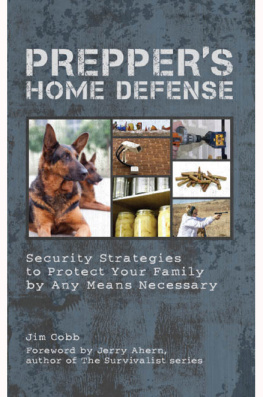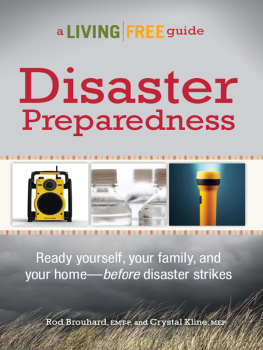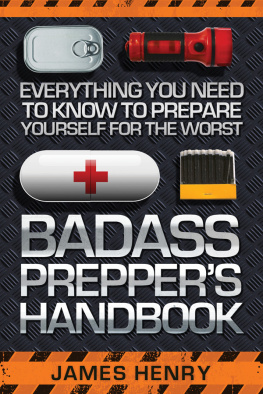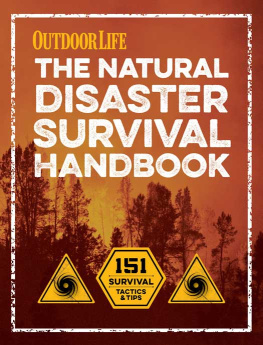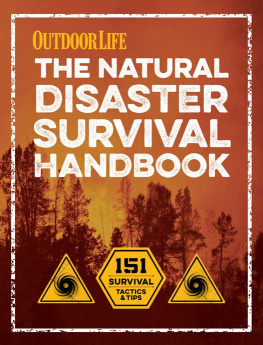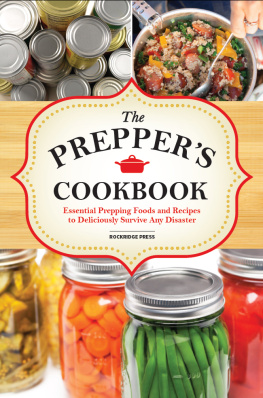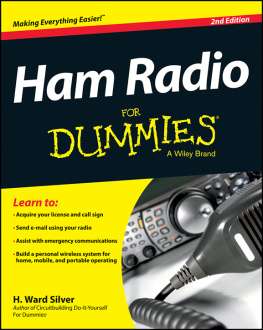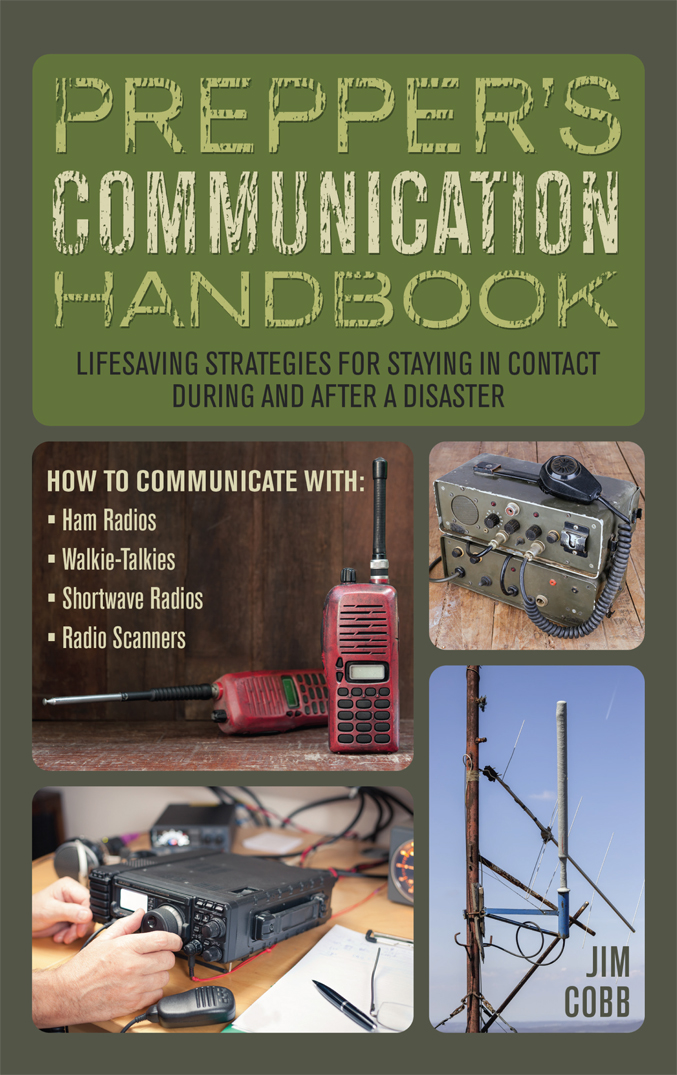
Text copyright 2016 Jim Cobb. Concept and design copyright 2016 Ulysses Press and its licensors. All rights reserved. Any unauthorized duplication in whole or in part or dissemination of this edition by any means (including but not limited to photocopying, electronic devices, digital versions, and the Internet) will be prosecuted to the fullest extent of the law.
Published in the US by:
Ulysses Press
P.O. Box 3440
Berkeley, CA 94703
www.ulyssespress.com
ISBN: 978-1-61243-539-8
Library of Congress Control Number: 2015944214
10 9 8 7 6 5 4 3 2 1
Acquisitions editor: Keith Riegert
Managing editor: Claire Chun
Editor: Renee Rutledge
Proofreader: Lauren Harrison
Index: Sayre Van Young
Front cover design: what!design @ whatweb.com
Interior design: Jake Flaherty
Cover artwork: radio communication Thanakorn Sisongkram/shutterstock.com; radio transciever Aubord Dulac/shutterstock.com; antenna serato/shutterstock.com; ham radio supersaiyan3/shutterstock.com
Interior photos: copyright Jim Cobb; page 29 copyright Oliver Jenkins/shutterstock.com
Distributed by Publishers Group West
PLEASE NOTE: This book is independently authored and published and no sponsorship or endorsement of this book by, and no affiliation with, any trademarked events, brands or other products mentioned or pictured within is claimed or suggested. All trademarks that appear in this book belong to their respective owners and are used here for informational purposes only. The author and publisher encourage readers to patronize the quality events, brands and other products mentioned and pictured in this book.
For Tammy Always
Table of Contents
Guide
CONTENTS
Anyone who has attended one of my classes or sat through one of my convention appearances has heard me say numerous times, Prepping gives you options. When you get right down to it, thats sort of the whole point. When you take the time to set supplies and gear aside as well as learn and practice relevant skills, you gain the luxury of options when something adverse occurs in your life. Rather than being locked into a single course of action because you lack alternatives, you can adjust your plan and reaction according to the resources available to you.
Information is a critical resource. You need it in order to make effective decisions. Information will, or at least should, guide your actions and your planning. Food, water, and shelter are your first priorities, as those are the things that will keep you alive. But once you have those squared away, youll need to plan your next move. To do that, youll need up-to-date and accurate information.
The discussion of emergency communication in this book largely focuses on available options. Im not going to get into radio theory, physics, propagation, and all that other fun stuff. Instead, Im going to cover several different types or categories of tools available to you when it comes to communicating both before and after a disaster strikes. Ive written this book to be accessible to the widest audience possible. While it may be interesting and worthwhile to learn, you dont need to know how an antenna works to be able to use a radio.
After covering a myriad of communication options, Ill move into communication skills, such as conflict resolution and interpreting body language. A lack of proper communication is at or near the top of the list of reasons we get into arguments with other people. Arguments arent always based on disagreeing. Often, once youve managed to sit down and have a conversation with someone, youll find you agree on far more topics than you disagree. The challenge is getting to that point. Knowing how to defuse a conflict, uncover the actual agenda at work behind the scenes, and keep your own information protected are all vital skills Ill cover here.
Take the time to practice and play around with your chosen communication tools. Sure, most of you are familiar with using your smartphones and tablets, but if youre new to the world of amateur, CB, and shortwave radio, you need to get yourself up to speed now, before those skills are put to the test. These arent tools you can pick up and use intelligently without some serious practice first. Not only do you need to know how and when to use them, you need to learn their limitations. Doing otherwise is sort of like planning to hunt deer with a 9-millimeter pistol. Sure, if youre really lucky, you might be able to pull it off. But the odds are against you.
Dont gamble with the lives of your family. Take the time to put each and every communication tool you purchase to the test. Know how to use them in good times as well as under stress. Teach your family members, too, in case you end up away from home when disaster hits.
Have fun with this stuff, folks. It isnt meant to be dry and boring. Think about it like thispracticing with your communication tools can help you find and network with other preppers in your area. Who knows, maybe youll make a new friend or two!
Most of you already have one or more radios kicking around the house, even if it is just the one in the car or truck. Ill start the journey through prepper communication options with one-way radios, which are thusly named because information only flows one wayto you from the broadcasting channel or station.
AM/FM
AM/FM radio has been omnipresent for decades and is the first thing that comes to mind when the topic of radio comes up. Despite recent advances in technology, there is still something to be said for good, old-fashioned broadcast radio.
AM stands for amplitude modulation. As the name would imply, an AM signal is one in which the amplitude, or peak of the transmission wave, is modulated or varied. Most of AM broadcasts consist of talk radio, sports, and religious discussions, with a bit of music tossed in here and there across the dial. It has been that way for the last few decades and likely wont be changing any time soon. AM channels range from 540 kHz to 1,700 kHz, spaced at every 10 kHz. For the uninitiated, kHz stands for kilohertz.
For many, AM radio is pretty much a snooze-fest. Not a lot goes on there that gets the blood pumping, other than the occasional ball game.

BASIC TYPES OF RADIOS
Broadcast radio has been in the United States since around the 1920s. Since then, it has evolved from a hobby enjoyed by those who could puzzle out the complexities of radio equipment to a major force in family entertainment. Nowadays, it seems as though radio often plays second (or perhaps third) fiddle to other means of information transmission. Certainly television supplanted radios position as the chief entertainer in the household from about the 1950s through the early 2000s. Of course, you cant discount the impact of video streaming and other online mediums, either. There are four basic categories of radios:

 Handheld. These are small radios, roughly the size of a walkie-talkie.
Handheld. These are small radios, roughly the size of a walkie-talkie.





